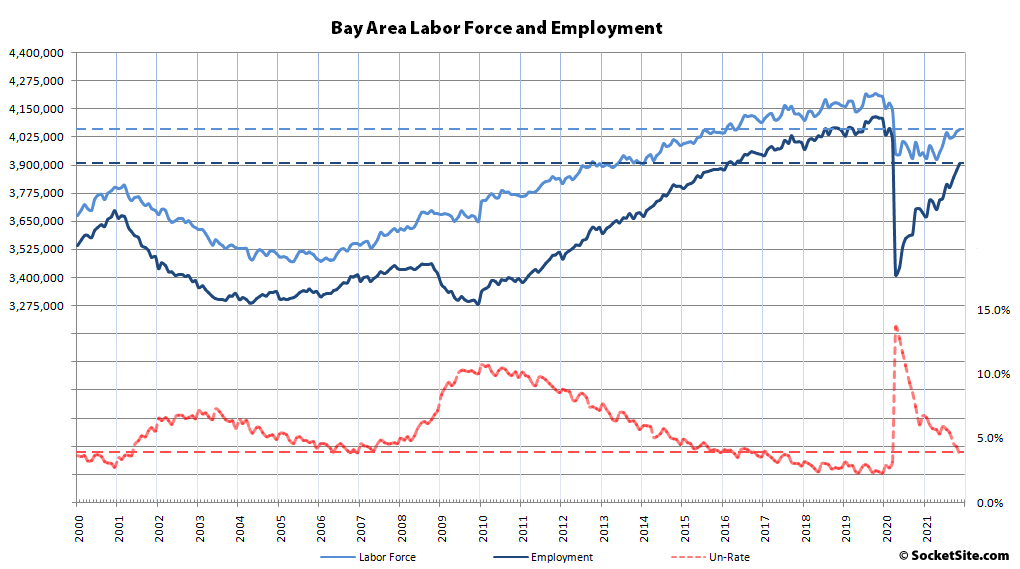Having increased by a downwardly revised 4,500 in October, the net number of people living in San Francisco with a paycheck increased by 6,300 in November to 546,800, dropping the unemployment rate to 3.3 percent with 37,800 more employed residents in the city than there were at the same time last year.
That being said, there are still 24,000 fewer employed people in San Francisco than there were prior to the pandemic and 18,300 fewer people in the labor force, but 68,000 jobs have been recovered since the pandemic hit and over 29,000 people have returned to the local labor force.
At the same time, the number of East Bay residents with a paycheck increased by 14,800 last month to 1,488,300, which equates to 59,600 more employed residents than there were at the same time last year but still 71,200 fewer than there were prior to the pandemic, with 51,000 fewer people in the labor force, for an unemployment rate of 4.5 percent.
Employment in both San Mateo and Santa Clara ticked up last month as well, by 4,900 and 7,800 respectively. And as such, there are now 76,700 more employed people in the Valley (1,435,500) than there were at the same time last year but still 42,600 fewer employed people than there were prior to the pandemic, with 32,500 fewer people in the labor force (1,482,100) for an average unemployment rate of 3.1 percent.
Total employment across Marin, Napa and Sonoma counties actually slipped by 1,800 in November to 434,800 but was still 25,200 higher than at the same time last year, with 18,900 fewer employed North Bay residents than there were prior to the pandemic and 15,500 fewer people in the combined labor force (450,900) for an average unemployment rate of 3.6 percent.
And as such, while 494,200 jobs have been recovered across the Bay Area since the start of the year, including 32,000 last month, and there are 199,300 more employed people spread across the Bay Area than there were at the same time last year, there are still 156,700 fewer employed Bay Area residents than there were prior to the pandemic having hit (4,062,100) and the labor force is down by 117,300, for an average unemployment rate of 3.7 percent versus 2.3 percent at the end of 2019.


